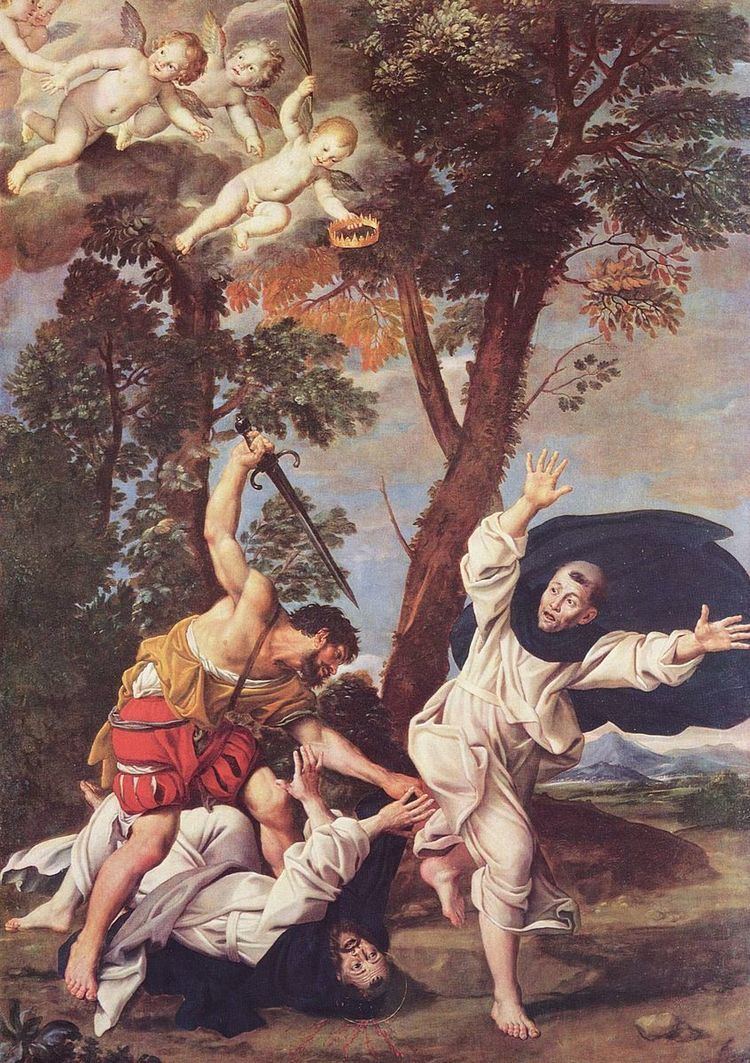Died 1293, Forli, Italy Role Saint | Name Carino Balsamo Feast April 28 | |
 | ||
People also search for Domenichino, Peregrine Laziosi, James Salomoni | ||
Blessed Carino Pietro of Balsamo (died 1293), sometimes called St. Acerinus, was the murderer of Saint Peter of Verona (Saint Peter Martyr) who later repented his actions and became a Dominican lay brother. He is venerated as a beatus by the Catholic Church.
Contents
Life
Prior to his entering the Dominican Order, Carino, was, according to Catholic tradition, a cruel man without scruples who had been hired by Milanese Cathars to kill Peter, a prominent Catholic inquisitor. Carino was a native of Cinisello Balsamo. The murder took place on April 6, 1252, when Peter was returning from Como to Milan. Carino's accomplice was named Manfredo Clitoro, of Giussano. The two assassins followed Peter as far as Barlassina, murdering him and mortally wounding Peter's companion Domenico at a lonely spot.
Carino split Peter’s head open, and mortally wounded Domenico. When he found that Peter was still breathing, he stabbed him with a dagger.
Carino fled to a Dominican monastery at Forlì, and confessed his crime to Giacomo Salomoni of Venice, also venerated as a beatus. Carino performed penances and become a lay brother there. Manfredo subsequently fled from the authorities and may have found refuge amongst the Waldenses in the Alps.
Veneration
After his death, Carino was venerated by the people of Forlì.
The regulation of Carino's cult by the papacy began in 1822, but the death of Pius VII delayed the process, and the paperwork was misplaced. Carino is buried at the Cathedral of Forlì, and in 1934, Cinisello Balsamo obtained Carino's head, a translation at which Blessed Alfredo Ildefonso Schuster participated. Carino's feast day is celebrated on April 28, the day of this translation.
